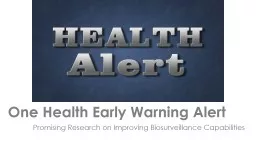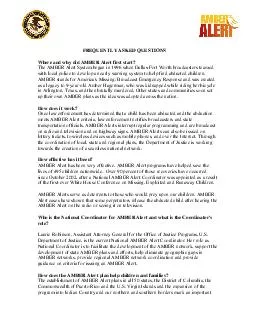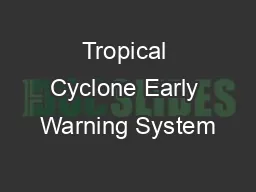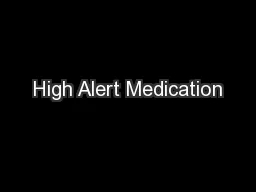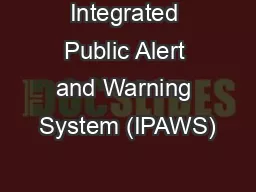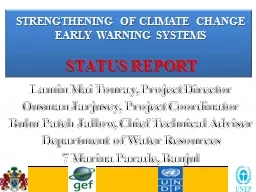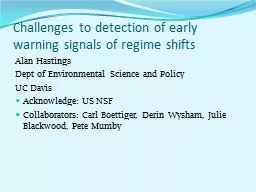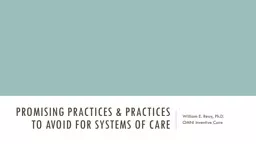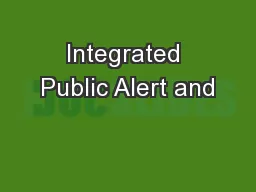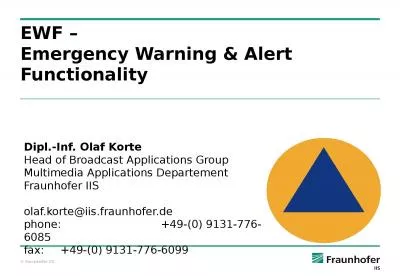PPT-One Health Early Warning Alert Promising Research on Improving
Author : calandra-battersby | Published Date : 2019-11-02
One Health Early Warning Alert Promising Research on Improving Biosurveillance Capabilities If anything kills over ten million people Infected Time Can Hidden Signals
Presentation Embed Code
Download Presentation
Download Presentation The PPT/PDF document "One Health Early Warning Alert Promisi..." is the property of its rightful owner. Permission is granted to download and print the materials on this website for personal, non-commercial use only, and to display it on your personal computer provided you do not modify the materials and that you retain all copyright notices contained in the materials. By downloading content from our website, you accept the terms of this agreement.
One Health Early Warning Alert Promising Research on Improving: Transcript
Download Rules Of Document
"One Health Early Warning Alert Promising Research on Improving"The content belongs to its owner. You may download and print it for personal use, without modification, and keep all copyright notices. By downloading, you agree to these terms.
Related Documents

